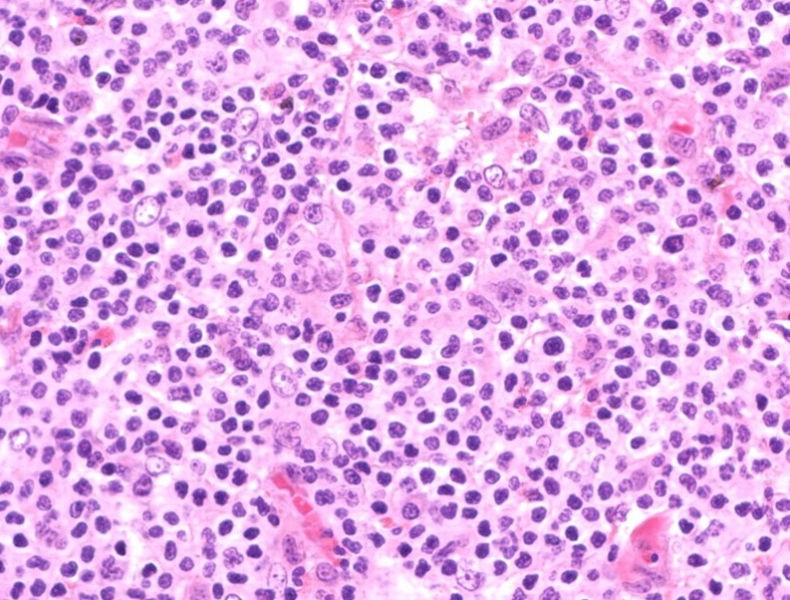What is TCLL?
- Home
- Services
- For Patients
- What is TCLL?

What is TCLL?
What is T-cell Lymphoma?
Synonyms: T-cell cancer, cancer of the immune system, cancer of the lymph nodes.
In order to understand T-cell lymphoma, one needs to understand three concepts: 1) The immune system; 2) Lymph nodes; and 3) T-cells.
The Immune system consists of a number of different cell types that all have one thing in common: their role in the human body, which is to recognize and eliminate any possible infectious organism that may have happened to enter through the initial barriers (i.e. skin, intestinal wall, lung membranes, etc.). It is also responsible for forming specific memory that enable it to remember previous infections, so that next time they can be killed even faster without harming the human body.
Lymphocytes, a large family of cells, make up a major part of the immune system. This group of cells can be divided in several types, but on a large scale, they are split into B-cells and T-cells. While under the microscope these two types look the same, their roles in the immune response are different; they can be distinguished by using very sophisticated diagnostic tests. It is important to point out that both T-cells and B-cells are spread throughout the entire human body, and that is why lymphomas can originate and grow in any possible part of the body (a unique feature of lymphomas compared to other cancers). The reason for that wide distribution is the basic function of the immune system: to survey the entire human body in search of possible intruders (i.e. viruses, bacteria, fungi, parasites, etc.). The majority of immune cells exist inside special glands called lymph nodes. Under the microscope lymph nodes are a mere collection of billions of lymphocytes (both B-cells and T-cells), with a scaffolding of fibrous bands, surrounded by a thick capsule to keep the structure stable. Every human body contains hundreds of lymph nodes spread from “head-to-toe.” You might remember having tender, swollen lymph nodes during strep throat or mononucleosis. In those cases, lymph nodes become swollen and tender because both B- and T-cells, respectively, multiply to fight the bacteria and virus, and by doing so, they cause inflammation; hence, the pain and fevers. If one could “light up all the lymph nodes in the human body to make them visible, our bodies would look like “Christmas trees” with hundreds of little lights. The final thing to mention is that T- and B-cells are constantly on the move, travelling from one lymph node to another using a specialized system of tubes or pipes. These transportation mechanisms are called lymphatic ducts, and they connect all the lymph nodes in the body to make one uniform system. This lymphatic system is reminiscent to blood vessels and the blood cells that travel in them. In fact, lymphocytes occasionally use the blood stream as a “highway” to travel faster, and that’s why lymphomas are sometimes erroneously called “blood cancers.”
To finish the description of the immune system, it is important to mention two other major immune organs that both T-cells and B-cells frequent: the spleen and bone marrow. These organs are considered to be major “hubs” of the immune cells. This helps to explain why both the spleen and bone marrow are frequently involved when it comes to lymphomas.
Since we’ve learned the basics of the immune system and lymph nodes, let’s look in more detail at T-cells. These are “regulatory cells” of the immune response to infection. T-cells are further subdivided into a few subtypes; that is why there are several types of T-cell lymphomas – they can originate from any of the T-cell subtypes. To regulate the immune system, T-cells have to communicate or “talk” to other cells to mount a strong immune response to infections. They do so by producing special chemicals called cytokines and chemokines. These are the same chemicals that are responsible for fevers, chills, body aches, fatigue and loss of appetite when a person has the flu, pneumonia or mononucleosis. This explains why patients with T-cell lymphomas frequently experience the same symptoms, especially fevers and severe sweats at night. In addition, these “signal molecules” can also be responsible for rash, itching, joint pains and other symptoms that occasionally accompany T-cell lymphomas (especially angioimmunoblastic T-cell lymphoma). It is also becoming more clear why people with T-cell lymphomas are more at risk of infections – the T-cell control of their immune system is deregulated by cancerous T-cells that “send wrong signals or messages” to other immune cells.
In summary, T-cell lymphomas are tumors of the T-cells, which are an integral part of the immune system and are one of the components of lymph nodes. Therefore, T-cell lymphomas can also be considered tumors of the immune system or tumors of the lymph nodes. There are several types of T-cell lymphomas that are distinct, and some are treated differently from others. Of note, NK-cell lymphomas are closely related to T-cell lymphomas and, therefore, are considered part of the same family. You can find detailed descriptions of T-cell and NK-cell lymphoma subtypes in the ‘Learning Corner’ section of the website.

 Join our mailing list.
Join our mailing list.
